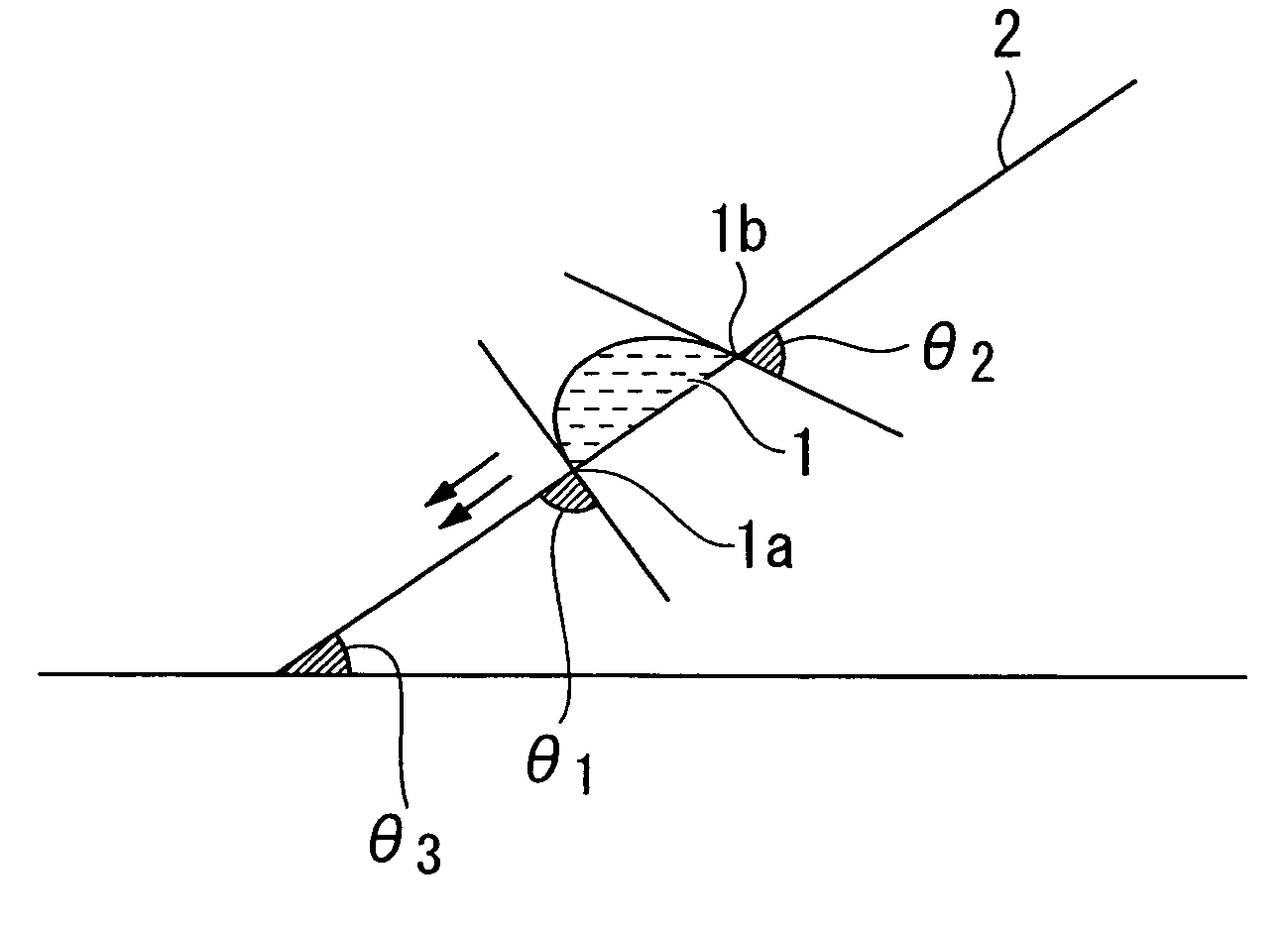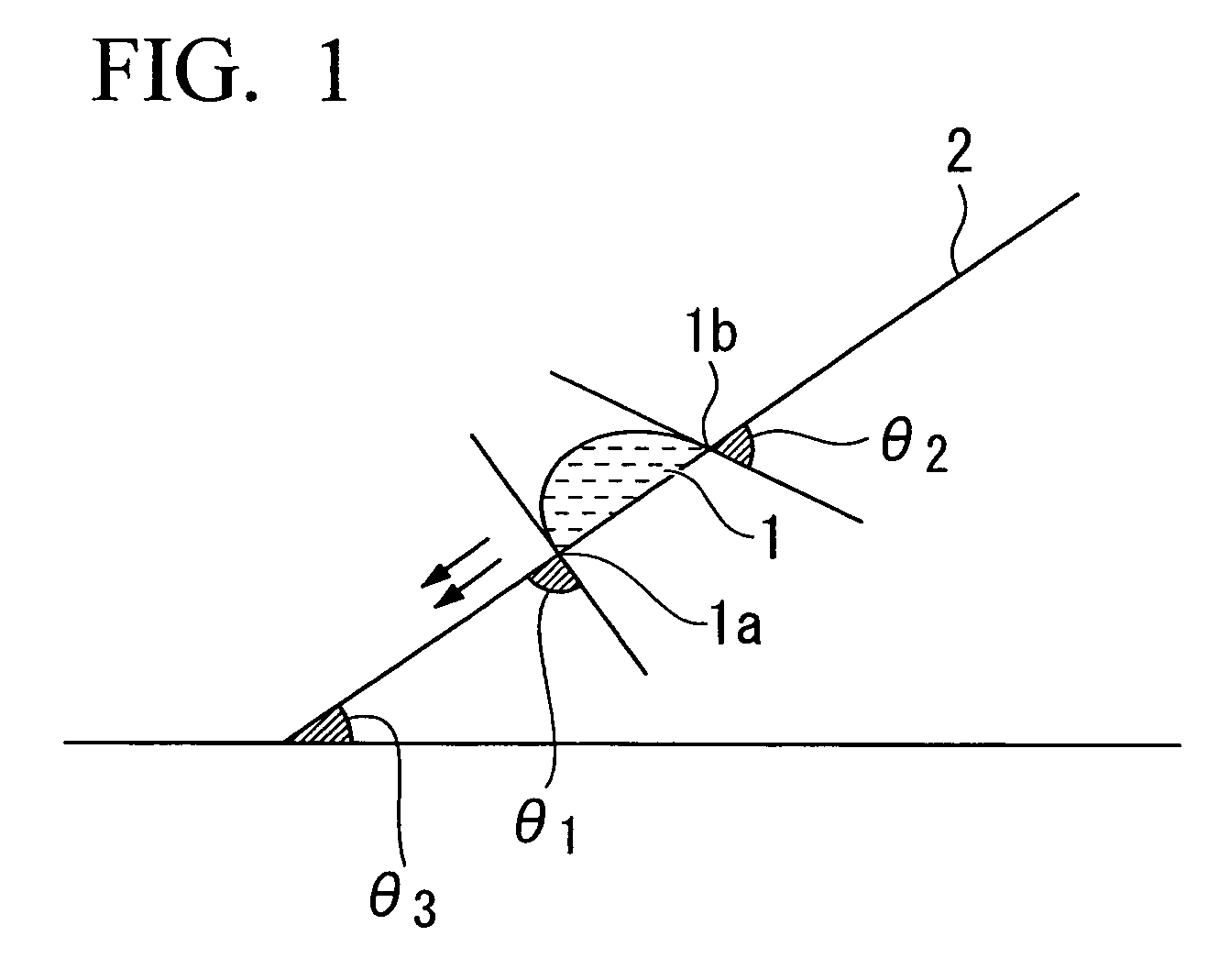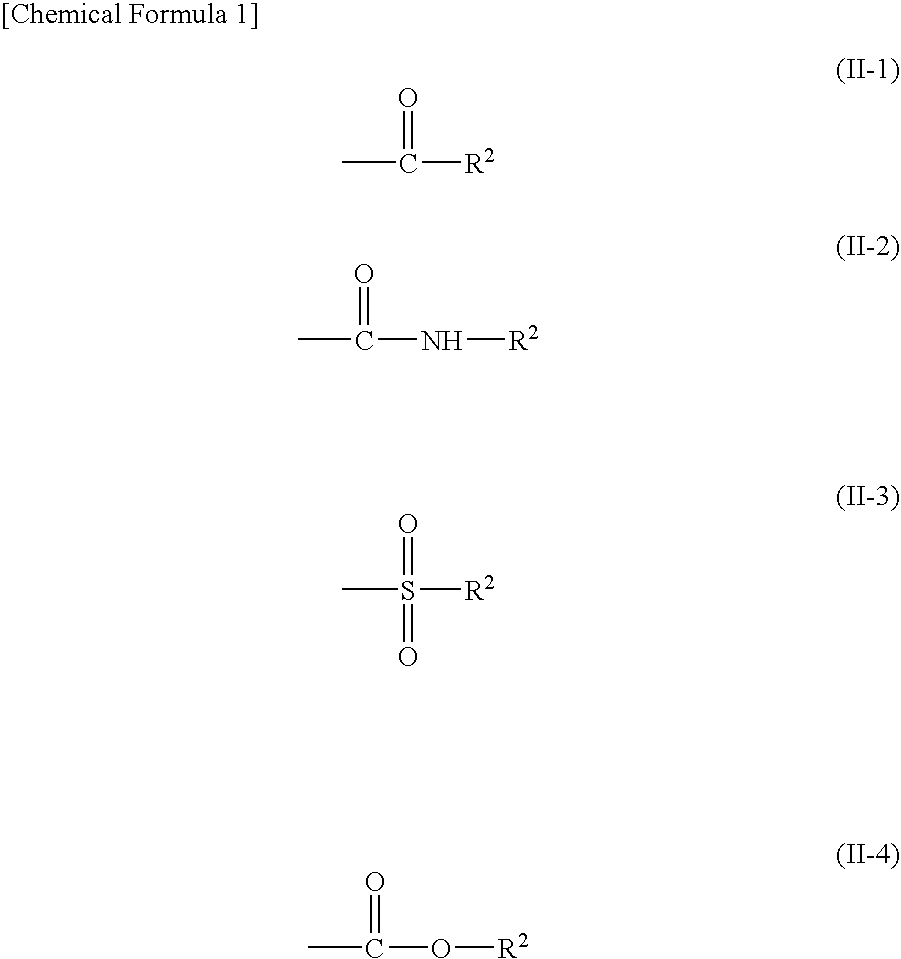Negative resist composition for immersion exposure and method of forming resist pattern
- Summary
- Abstract
- Description
- Claims
- Application Information
AI Technical Summary
Benefits of technology
Problems solved by technology
Method used
Image
Examples
synthesis example 1
Synthesis of Compound (1)
[0622]45 g (333 mmol) of potassium carbonate and 45 g (296 mmol) of methyl bromoacetate were added to 450 ml of an acetone solution containing 46 g (269 mmol) of 2-vinylnaphthol in a nitrogen atmosphere at 0° C., and then the temperature was elevated to room temperature, followed by stirring for 3 hours. After conducting thin-layer chromatography to confirm that the raw materials had been consumed, the reaction mixture was subjected to filtration, and the obtained filtrate was subjected to distillation under reduced pressure to remove the solvent. Then, water was added to the resultant, and extraction was conducted with ethyl acetate three times. The resulting organic phase was washed with water twice, and then subjected to distillation under reduced pressure to remove the solvent. The resulting crude product was purified by recrystallization (using an n-heptane / ethyl acetate mixture), thereby obtaining 54 g of a compound (1)-1 in the form of a colorless sol...
synthesis example 2
Synthesis of Compound (2)
[0632]61 g (600 mmol) of triethylamine and 64 g (418 mmol) of methyl bromoacetate were added to 300 ml of a THF solution containing 30 g (348 mmol) of methacrylic acid in a nitrogen atmosphere at 0° C., and the temperature was elevated to room temperature, followed by stirring for 3 hours. After conducting thin-layer chromatography to confirm that the raw materials had been consumed, the reaction solution was subjected to distillation under reduced pressure to remove the solvent. Then, water was added to the resultant, and extraction was conducted with ethyl acetate three times. The resulting organic phase was washed with water twice, and then subjected to distillation under reduced pressure to remove the solvent, thereby obtaining 47 g of a compound (2)-1 in the form of a colorless liquid (yield: 85%).
[0633]Subsequently, 700 ml of a THF solution containing 30 g (190 mmol) of the compound (2)-1 was prepared, and 700 ml of a 2.38% by weight aqueous solution o...
example 1
Synthesis of Fluorine-Containing Polymeric Compound (F1)
[0643]5.25 g (14.57 mmol) of the compound (1) and 2.78 g (17.81 mmol) of a compound (3) were charged into a three-necked flask equipped with a thermometer and a reflux tube, and 45.50 g of tetrahydrofuran was added thereto and dissolved. Then, 4.86 mmol of dimethyl 2,2′-azobis(isobutyrate) (product name: V-601) as a polymerization initiator was added and dissolved in the resulting solution. The solution was stirred while heating at 80° C. for 6 hours in a nitrogen atmosphere, and was then cooled to room temperature. The resulting polymer solution was concentrated under reduced pressure, and dropwise added to an excess amount of n-heptane to thereby precipitate a polymer. Then, the precipitated polymer was separated by filtration, followed by washing and drying, thereby obtaining 3.20 g of a fluorine-containing polymeric compound (F1) as an objective compound.
[0644]With respect to the fluorine-containing polymeric compound (F1),...
PUM
| Property | Measurement | Unit |
|---|---|---|
| Time | aaaaa | aaaaa |
| Time | aaaaa | aaaaa |
| Surface energy | aaaaa | aaaaa |
Abstract
Description
Claims
Application Information
 Login to View More
Login to View More - R&D
- Intellectual Property
- Life Sciences
- Materials
- Tech Scout
- Unparalleled Data Quality
- Higher Quality Content
- 60% Fewer Hallucinations
Browse by: Latest US Patents, China's latest patents, Technical Efficacy Thesaurus, Application Domain, Technology Topic, Popular Technical Reports.
© 2025 PatSnap. All rights reserved.Legal|Privacy policy|Modern Slavery Act Transparency Statement|Sitemap|About US| Contact US: help@patsnap.com



